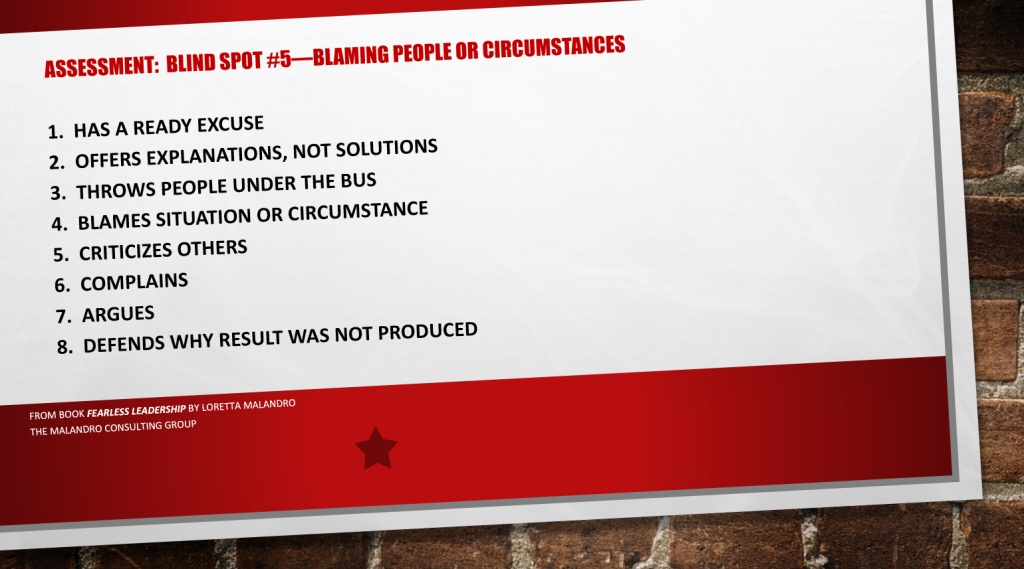
This is the fifth of 10 blind spots that can sabotage your effectiveness.
Blind Spot #5: Blaming People or Circumstances. What it Means
Pointing the finger at others or at a situation is the art of deflecting the blame from yourself to others. After all, it’s much easier to blame and make excuses than it is to take accountability.
The Downside of The Blame Game
Do you blame external factors instead of taking accountability?
If you do, others will perceive you as untrustworthy, a pot-stirrer, divisive, a silo builder, and a time-waster. They quickly learn that you generate blame far more often than you generate solutions.
Do YOU Blame People or Circumstances?
Ask others to assess you using the scale of 1 (rarely) to 5 (frequently).
How do you rate?
32 to 40: You’re sabotaging yourself. You view people as enemies or allies. Making excuses is second-nature to you.
17 to 31: Sometimes you take accountability and sometimes you don’t. Others can’t count on you to be a stand-up person and own the problem all the time.
8 to 16: Congratulations! You are committed to taking accountability. You slide once in a while, but you quickly recover.
Want More?
Read the book Fearless Leadership and the anti-blogs on The 10 Blind Spots.
Dr. Loretta Malandro is the CEO of the Malandro Consulting Group (www.malandro.com) and the author of several landmark business communication books including: Fearless Leadership, Say It Right the First Time, and her new book, “Speak Up, Show Up, and Stand Out: The 9 Communication Rules You Need to Succeed”.




